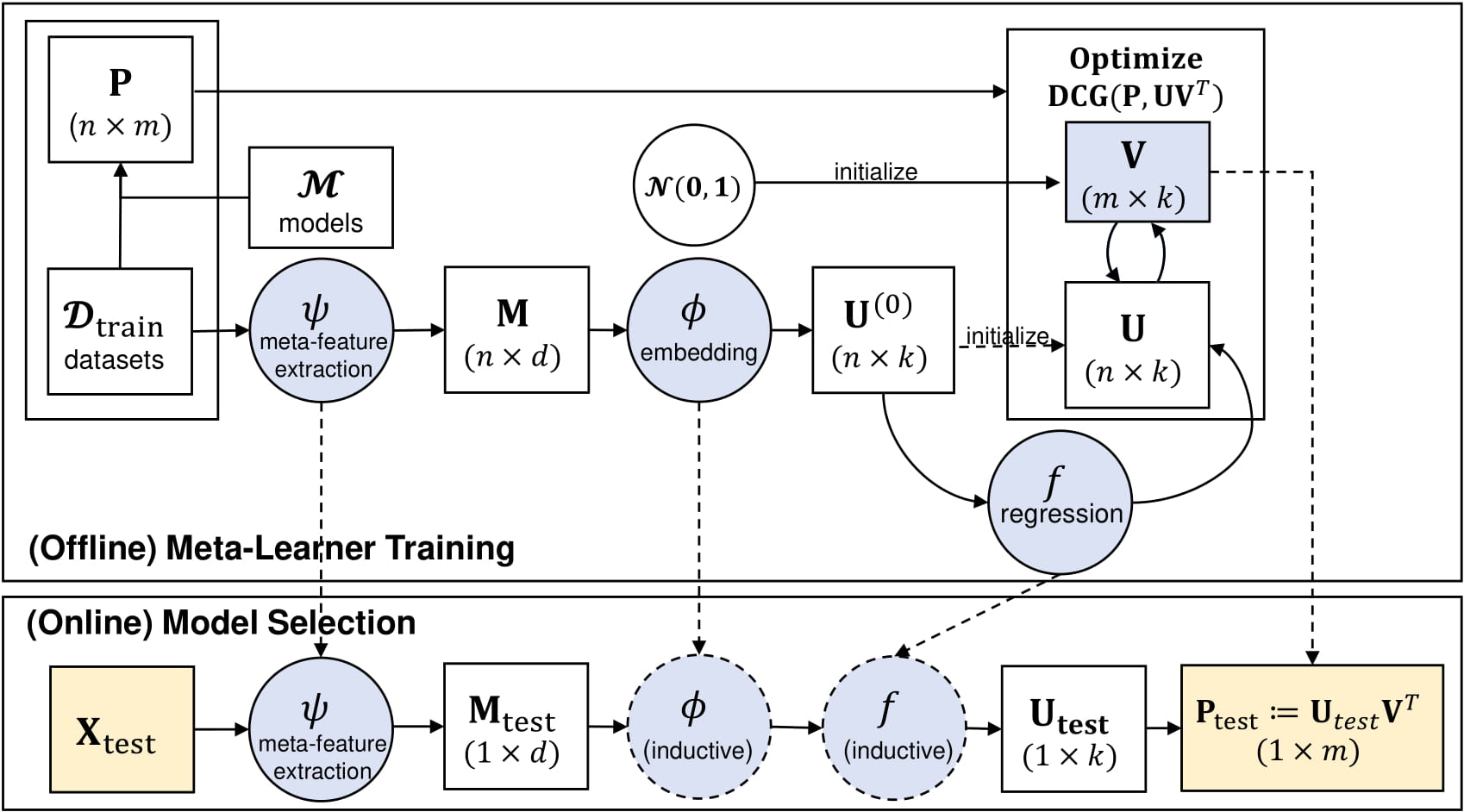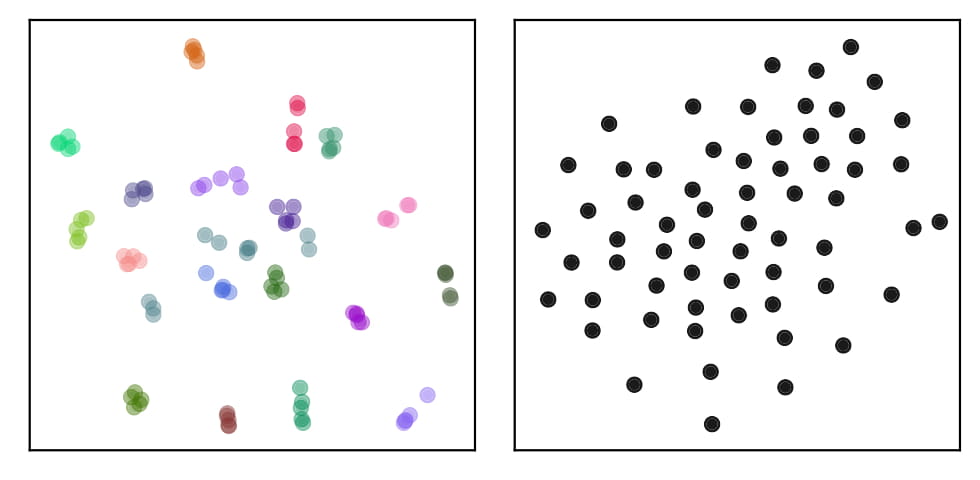


Development Status: As of 09/26/2020, MetaOD is under active development and in its alpha stage. Please follow, star, and fork to get the latest update! For paper reproducibility, please see the paper_reproducibility folder for instruction.
Given an unsupervised outlier detection (OD) task on a new dataset, how can we automatically select a good outlier detection method and its hyperparameter(s) (collectively called a model)? Thus far, model selection for OD has been a "black art"; as any model evaluation is infeasible due to the lack of (i) hold-out data with labels, and (ii) a universal objective function. In this work, we develop the first principled data-driven approach to model selection for OD, called MetaOD, based on meta-learning. In short, MetaOD is trained on extensive OD benchmark datasets to capitalize the prior experience so that it could select the potentially best performing model for unseen datasets.
Using MetaOD is easy. You could pass in a dataset, and MetaOD will return the most performing outlier detection models for it, which boosts both detection quality and reduces the cost of running multiple models.
API Demo for selecting outlier detection model on a new dataset (within 3 lines):
from metaod.models.utility import prepare_trained_model
from metaod.models.predict_metaod import select_model
# load pretrained MetaOD model
prepare_trained_model()
# use MetaOD to recommend models. It returns the top n model for new data X_train
selected_models = select_model(X_train, n_selection=100)Preprint paper | Reproducibility instruction
Citing MetaOD:
If you use MetaOD in a scientific publication, we would appreciate citations to the following paper:
@article{zhao2020automating,
author = {Zhao, Yue and Ryan Rossi and Leman Akoglu},
title = {Automating Outlier Detection via Meta-Learning},
journal = {arXiv preprint arXiv:2009.10606},
year = {2020},
}
or:
Zhao, Y., Rossi, R., and Akoglu, L., 2020. Automating Outlier Detection via Meta-Learning. arXiv preprint arXiv:2009.10606.
Table of Contents:
- Installation
- API Cheatsheet & Reference
- Quick Start for Model Selection
- Quick Start for Meta Feature Generation
As shown in the figure below, MetaOD contains offline meta-learner training and online model selection. For selecting an outlier detection model for a new dataset, one only needs the online model selection. Specifically, to be finished.

It is recommended to use pip for installation. Please make sure the latest version is installed, as MetaOD is updated frequently:
pip install metaod # normal install
pip install --upgrade metaod # or update if needed
pip install --pre metaod # or include pre-release version for new featuresAlternatively, you could clone and run setup.py file:
git clone https://github.com/yzhao062/metaod.git
cd metaod
pip install .Required Dependencies:
- Python 3.5, 3.6, or 3.7
- joblib>=0.14.1
- liac-arff
- numpy>=1.18.1
- scipy>=0.20
- scikit_learn==0.22.1
- pandas>=0.20
- pyod>=0.8
Note: Since we need to load trained models, we fix the scikit-learn version to 0.20. We recommend you to use MetaOD in a fully fresh env to have the right dependency.
"examples/model_selection_example.py" provide an example on using MetaOD for selecting top models on a new datasets, which is fully unsupervised.
The key procedures are below:
Load some synthetic datasets
# Generate sample data X_train, y_train, X_test, y_test = \ generate_data(n_train=1000, n_test=100, n_features=3, contamination=0.5, random_state=42)
Use MetaOD to select top 100 models
from metaod.models.utility import prepare_trained_model from metaod.models.predict_metaod import select_model # load pretrained models prepare_trained_model() # recommended models. this returns the top model for X_train selected_models = select_model(X_train, n_selection=100)
Show the selected models' performance evaluation (result may vary slightly due to built-in randomness).
1st model Average Precision 0.9780551579734139 10th model Average Precision 0.959749602397687 50th model Average Precision 0.6211392467111937
Getting the embedding of an arbitrary dataset is first step of MetaOD, which cam be done by our specialized meta-feature generation function.
It may be used for other purposes as well, e.g., measuring the similarity of two datasets.
# import meta-feature generator
from metaod.models.gen_meta_features import gen_meta_features
meta_features, _ = generate_meta_features(X)A simple example of visualizing two different environments using TSNE with our meta-features are shown below. The environment on the left is composed 100 datasets with similarity, and the same color stands for same group of datasets. The environment on the left is composed 62 datasets without known similarity. Our meta-features successfully capture the underlying similarity in the left figure.
